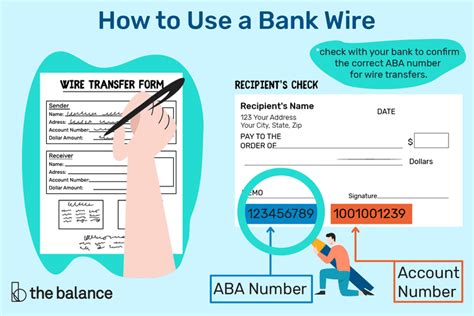How To Do a Bank Wire Transfer: A Step-by-Step Guide
Sending money via bank wire transfer is a fast and secure method for large transactions. Whether you're paying a vendor, sending funds internationally, or handling a significant personal transfer, understanding the process is crucial. This guide provides a step-by-step walkthrough, covering everything you need to know.
What is a Bank Wire Transfer?
A bank wire transfer is an electronic method of transferring funds directly between bank accounts. Unlike other methods like checks or ACH transfers, wire transfers offer near-instantaneous transfers, making them ideal for urgent transactions. However, they typically come with higher fees than other transfer methods.
Types of Wire Transfers
There are two main types of wire transfers:
- Domestic Wire Transfers: These transfers occur within the same country. They're generally faster and cheaper than international transfers.
- International Wire Transfers: These transfers involve sending money across borders. They often involve intermediary banks, leading to longer processing times and higher fees. Swift codes (SWIFT BIC codes) are crucial for international transfers.
How to Initiate a Bank Wire Transfer: A Step-by-Step Guide
The exact steps may vary slightly depending on your bank, but the general process remains consistent.
Step 1: Gather Necessary Information
Before you begin, you'll need the following information:
- Recipient's Bank Name and Address: This information is essential for directing the transfer.
- Recipient's Account Number: This is the recipient's specific bank account number where the funds will be deposited.
- Recipient's Bank Routing Number (ABA number for US domestic transfers, SWIFT code for international transfers): This number identifies the recipient's bank within the banking system.
- Recipient's Name and Address: Precise matching of names and addresses is crucial for successful transfers.
- Amount to be Transferred: Clearly specify the exact amount you wish to send.
- Your Bank Account Details: You'll need your account number and any necessary security information for authentication.
- Purpose of Transfer (Optional but Recommended): Providing a brief description of the transfer's purpose can help with processing and potential inquiries.
Step 2: Contact Your Bank
You can initiate a wire transfer through several methods:
- In-Person at a Branch: Visit your local bank branch and speak with a teller. This is a good option for first-time users or those requiring assistance.
- Online Banking: Many banks allow you to initiate wire transfers through their online banking platforms. This is often the most convenient method.
- By Phone: Contact your bank's customer service line. Be prepared to provide all the necessary information mentioned above.
Step 3: Provide the Necessary Information
Carefully and accurately enter all the required information into your bank's system or provide it to the bank representative. Double-check everything before submitting the transfer. Errors can significantly delay or prevent the transfer.
Step 4: Confirm and Authorize
Once you have entered all the information, review it thoroughly for accuracy. You’ll likely need to authorize the transfer, possibly with a security code or other authentication method.
Step 5: Receive Confirmation
After the transfer is initiated, you'll receive a confirmation number or receipt. Keep this as proof of the transaction.
Fees Associated with Wire Transfers
Wire transfers typically involve fees, which vary depending on the bank, transfer type (domestic or international), and the amount transferred. These fees can be substantial, especially for international transfers. Inquire about fees with your bank before initiating the transfer.
Tips for a Smooth Wire Transfer
- Allow Sufficient Time: While wire transfers are fast, allow extra time, especially for international transfers, to account for processing delays.
- Double-Check Information: Accuracy is paramount. Carefully verify all details before submitting the transfer.
- Keep Records: Retain all confirmation numbers and receipts as proof of the transaction.
- Understand Fees: Inquire about fees beforehand to avoid surprises.
- Consider Alternatives: For smaller amounts, consider lower-cost alternatives like ACH transfers or online payment services.
By following these steps, you can confidently execute a bank wire transfer, ensuring your funds reach their destination securely and efficiently. Remember to always prioritize accuracy and double-check all information before submitting your transfer.
